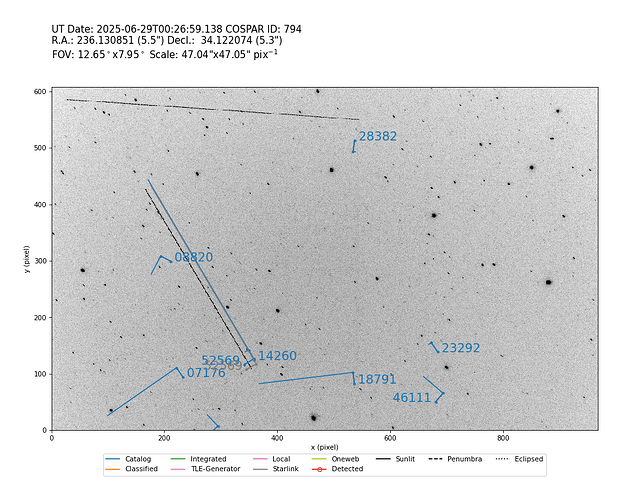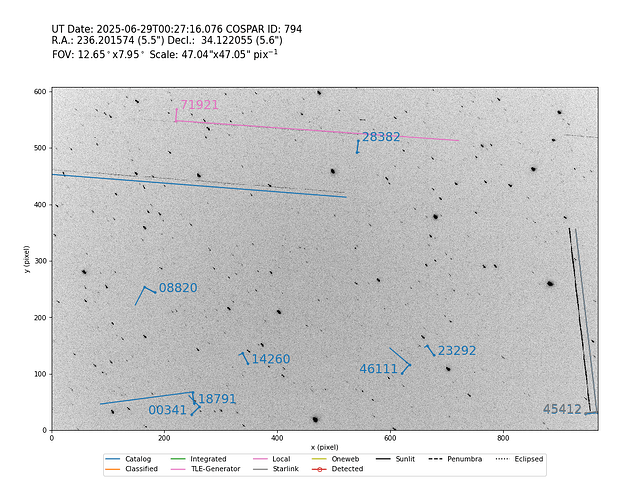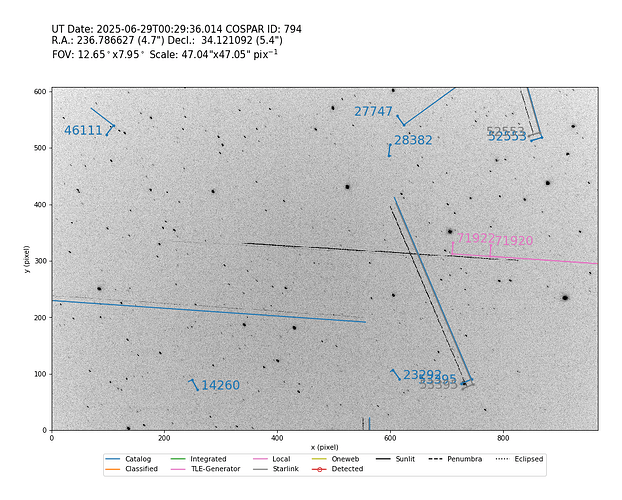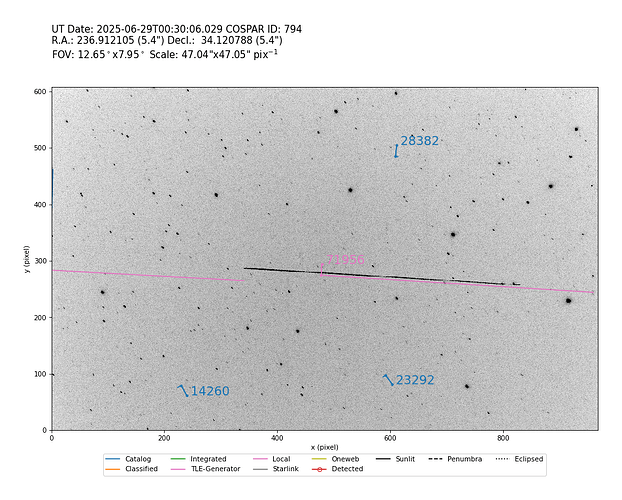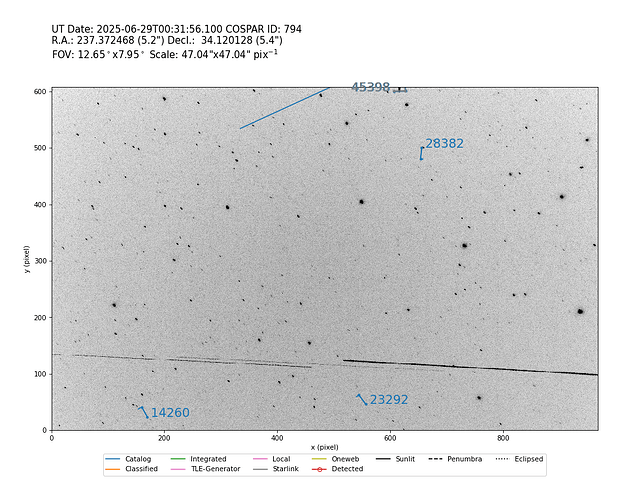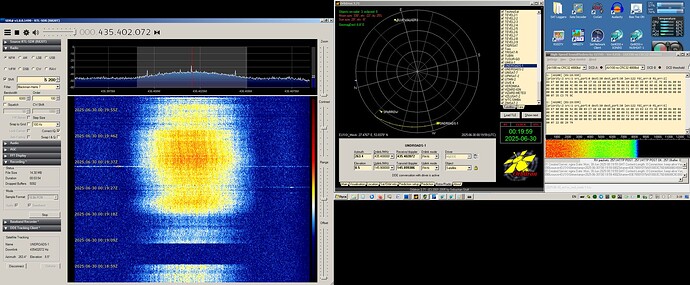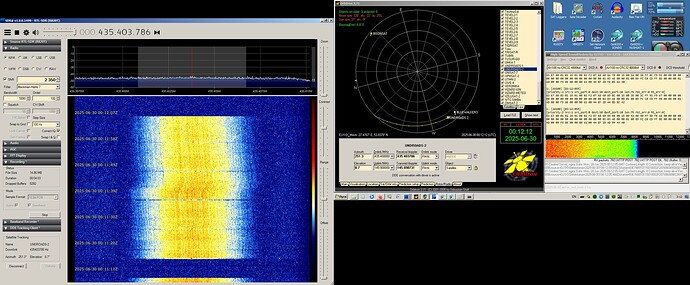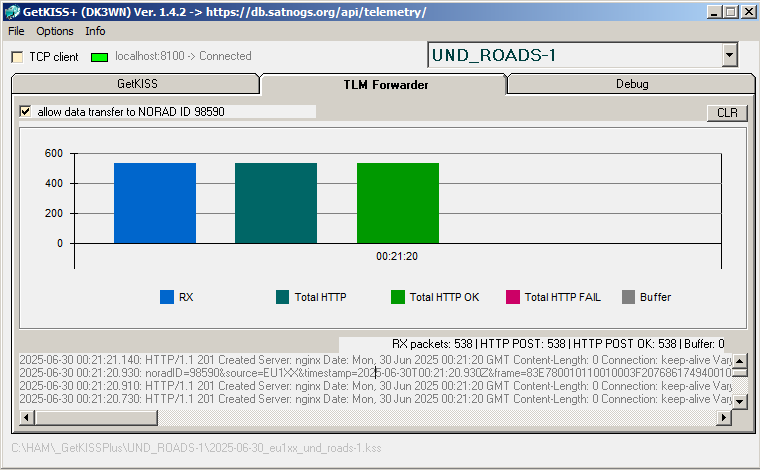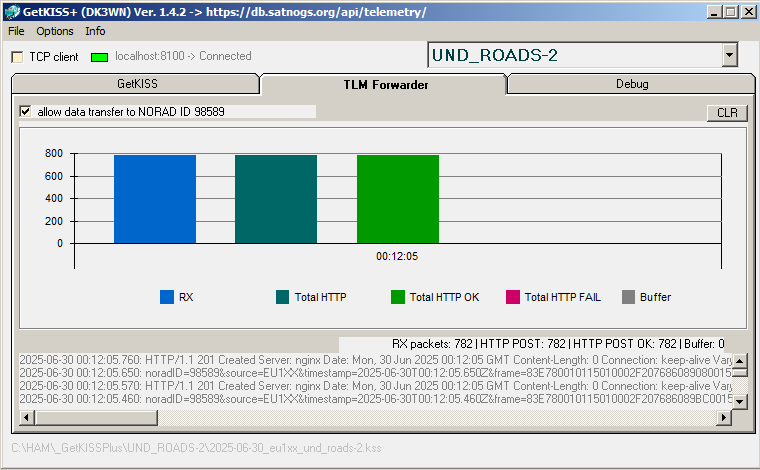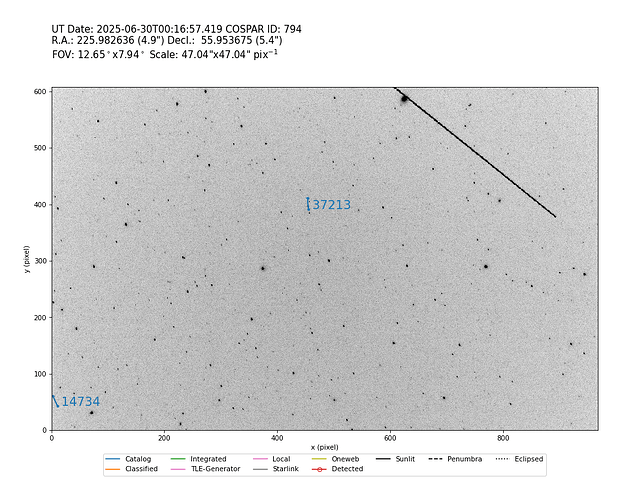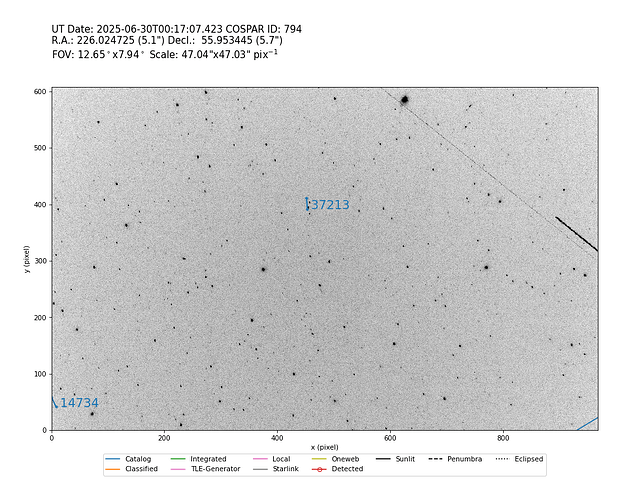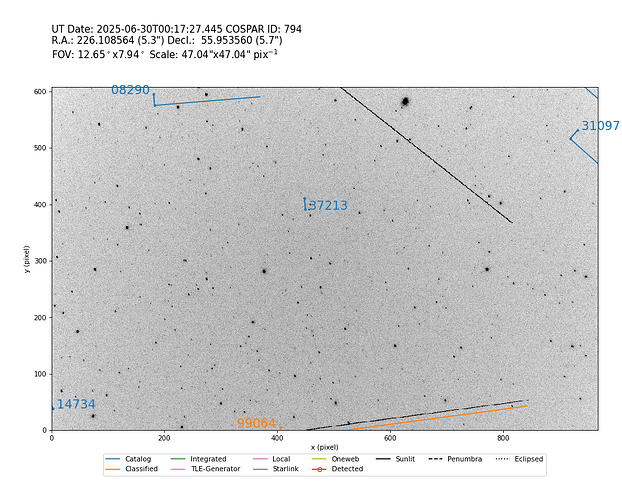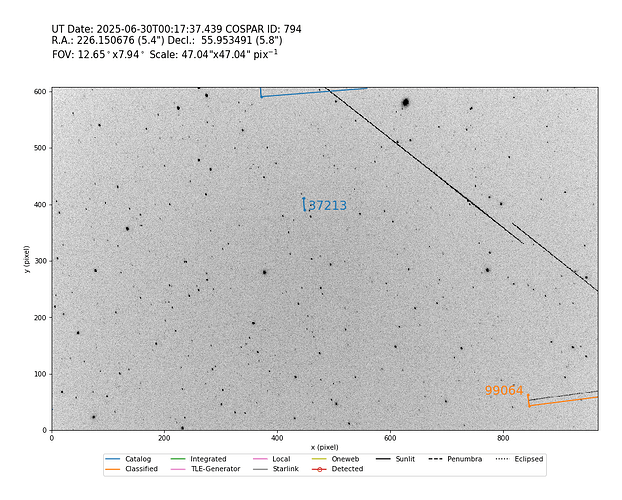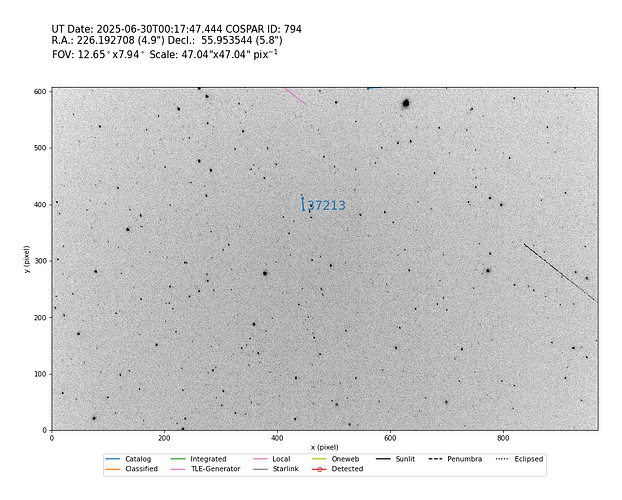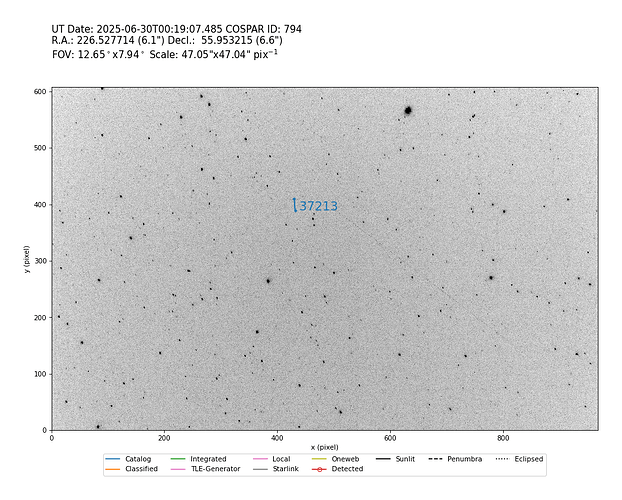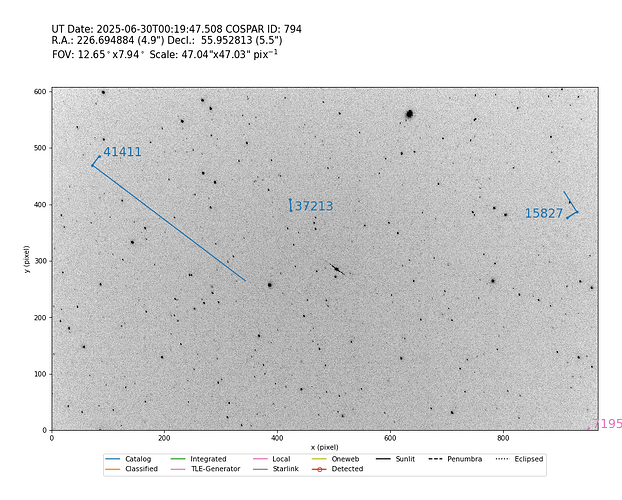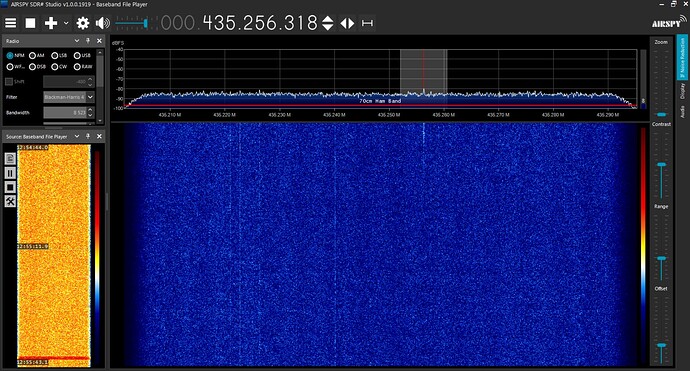I finally got some optical observations of Transporter 14, after some cloudy nights. I used a static aimed camera ASI178, with a 50mm F1.4 lens and STVID software. The images are 10 second exposures, which cause the fast moving satellites to draw a line on the image. I expect to only detect the larger satellites, and not the too small 1U and 3Us. The post launch TLEs are starting to deviate, so the IDs mentioned can be inaccurate. Also the TLEs have a negative drag term, which I think is suspicious, as I have only seen this with satellites that are known to use propulsion to raise their orbit. I use the Celestrak Norad ids, as the Satnogs list in this topic is not complete?
Most detection show a regular dip in the brightness, but I don’t think they are spinning. I guess this is an pixel aliasing effect of the camera.
Here is the first one. It might be HORIS-2, 71921 that was predicted a bit later.
This might be ADDCUBE, 71950, that was predicted a bit later, but now it happens to overlay with the previous 71921. The detection is very faint under the overlay.
Then there are some invisible:
CONNECTA IOT-11, 71909
HYPERFIELD-1B, 71913
CONNECTA IOT-10, 71910
CONNECTA IOT-12, 71908
GHGSAT-C13, 71902
SATMAR, 71917
Just left of BRO-18, 71943 we see a small glint. Not sure which sat it is.
Here are two traces close together. One is obvious, but the second one is barely visible a few pixels lower and is roughly 100 pixel later (left). They might be HORIS-1, 71920 and UND ROADS 2, 71922. The HORIS-1 matches the earlier seen HORIS-2 in brightness:
Here we maybe have FORGESTAR-1A, 71956:
Not seen:
SKYBEE-A02, 71965C
ION SCV-020, 71953, which is weird, as I have observed a lot of ION SCVs.
So probably the IDs are off!
SERIES 4, 71954C
Next there were 3 flying close together, with out a predicted TLE in sight. They are ahead of some TLEs which are: USPWSA-DRAGOON, 71940, PULSAR IOV, 71936, ELARA11, 71964.
The rest was out of view. I will try to catch the later satellites some other night. I had hoped to catch them a few nights earlier, in which case the TLEs might have been more accurate. But still I hope this can be informative and inspiring! But as said, don’t trust the Norad numbers too much!
